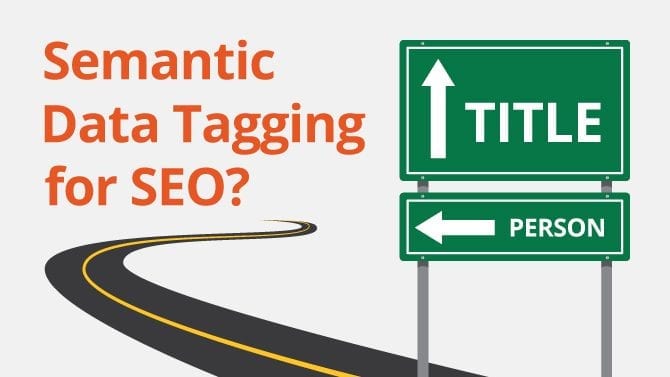
You know when you are on a road trip and you get hungry? What do you do? Okay, of course you eat, but do you stop at the next exit and drive around aimlessly, hoping something appears? Or do you read the signs that tell you exactly where to go for the food of your choosing? If you are like most people, you probably rely on the signs with specific directions. Well, this is exactly what semantic data can do for your website. Instead of the search engine gods having to wander around your site hoping to come across the information they need, you can make it as simple as a road sign for them.
How does semantic data tagging work?
Essentially, semantic data tagging is like a virtual, behind-the-scenes labeler. Instead of relying on keywords to get your message across to the search engine, which can sometimes be confusing, it lets them know exactly what you have to offer. You can break down your website in simple terms for the search engine bots by using labels such as person, event, article, title, etc. It takes the guesswork out of producing search results so that the user can get the most qualified results.
Examples of using markup include Events, Local Businesses, Products, Reviews and the list goes on. You can pinpoint (tag) elements of the site to tell Google that your opening hours are mon-fri 9am-5pm, that you accept cash, credit and major credit cards, your location details, contact information and more
Sounds complicated. Is it?
Since this is all done through coding, it can seem overwhelming. Just one look at Schema.org (the go-to place for all things semantic data-related) and, unless you are a Webmaster, your head will spin. Luckily, there are several add-ons and apps you can use to implement the basics on your site. Google even produces its own Structured Data Markup Helper to ensure that everyone who wants to benefit from semantic data tagging can.
Schema enriches Search Engine Results by making it a better browsing experience for users through showing more detailed, precise information – ultimately increasing the likelihood of click through rate for those searching for your services/products.
What’s in it for me?
Clearly, semantic data tagging can help you out, because it makes it more clear to the search engines what you have to offer. When someone uses your keywords, Google will easily be able to locate you and show your site to the searcher. But wait, there’s more! The biggest advantage to using semantic data tagging is a high click-through rate. How is this possible? Because this special coding is responsible for the search results that include author pictures, star ratings, event listings and reviews. And studies prove that time and time again, when someone is faced with a jazzed up result and a plain text one, they pick the jazzed up one. Wouldn’t you?
So let’s sum up: Semantic data tagging is becoming a necessity in the online world. It allows you to clearly label your content so that Google doesn’t have to wonder if the post you wrote about Apple is referring to a person, a computer or the fruit. When you do show up in the search results, your listing will stand out, causing more people to click on it. And when you share your content on social media, you can control what the title, description and thumbnail look like with precision. Yeah, you definitely need it.
For those who’ve not implemented schema should do so ASAP. If you would like help getting your site up to speed with semantic data tagging, contact us.









